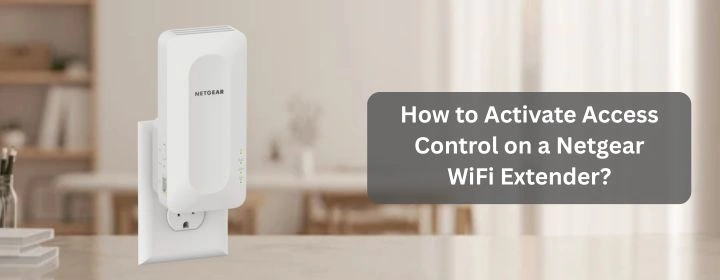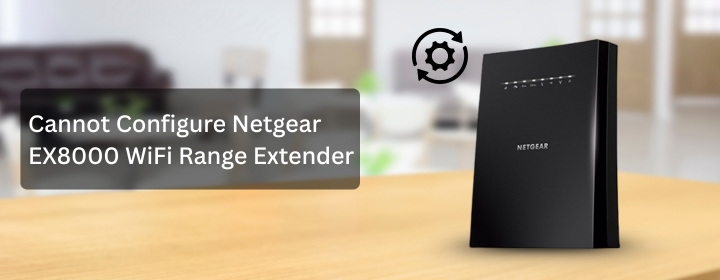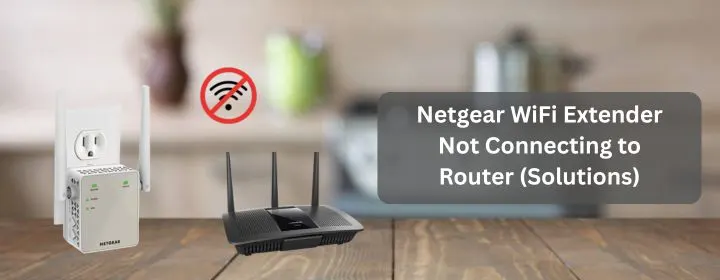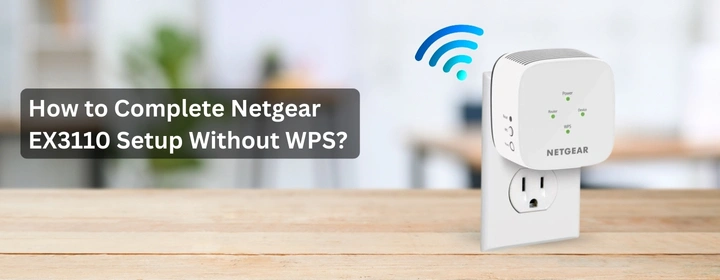You probably set up your Netgear WiFi extender to bring the internet into places in your house that are hard to reach. Yes, it works, but at some point, you’ll realize that too many devices are connected or that a neighbor has somehow snuck into your network. That’s when access restriction comes into play. This is a simple feature, but it’s really helpful if you want to limit who may use your WiFi. We’ll teach you how to switch on access control for your extender in this article.
Why is access control important?
WiFi extenders do what they claim they will do: they strengthen the signals from your router. But if too many people know your password, it will be easier for others who don’t pay to get in. It’s possible that a family member came over once, developed a connection, and now their phone goes back on every time they pull up in your driveway. Or maybe one of your child’s friends got the password and now everyone in the neighborhood knows it.
This issue can be fixed with access restriction. You may set rules regarding which devices can come in and which ones can’t. You might think of it as a digital guest list for your extender.
How to Get Started: The Basics
Before you start, make sure that your extender is plugged in and connected to your main WiFi. You will also need a phone or laptop to go to the settings site for the extender. That’s where all the fun happens.
Step 1: Sign in to your Netgear WiFi Extender
For new devices, open a browser and enter www.mywifiext.net or mywifiext setup to access settings. If it doesn’t work, try the IP address, generally 192.168.1.250.
- The Netgear WiFi extender login page will appear.
- Enter your username and password for the admin. If you haven’t changed the default settings, look on the back of your extender or in the instructions.
The extender’s dashboard will show up when you perform Netgear Wifi extender log in.
Step 2: Find the settings for access control
This part varies on the model of your expansion, but the path is usually the same.
- Look for Settings or Advanced Settings.
- You should see something like Device Management or Access Control in the menu.
- Click it, and a list of all the devices that are currently connected will show up.
Setting Up Control Over Access
This is the best part. Once you’re on the access control page, you may switch on the feature. It usually appears like a toggle or a checkbox.
Enable the Access Control feature.
- Select the Mode: Some extenders allow you select between two modes:
- Allow list (whitelist): Only the devices you indicate are acceptable may connect.
- Block list (blacklist): You just block the devices you don’t want to let in, and everyone else can get in.
Most people prefer the whitelist method since it is stricter.
- Add Devices: The MAC addresses of the devices that are connected will be revealed. These are long numbers and letters. It should be unpredictable and memorable.
- Save Changes: Always click apply or save before leaving the site.
How to Set It Up
- Write down your MAC addresses since some devices provide names that don’t make sense. Consider double-checking and writing down names before banning someone. You shouldn’t mistakenly lock your laptop.
- Make sure your Netgear Wifi extender login is protected. If someone has your extender login info, they may reset the settings. You should change the default password immediately.
- Attempt It Out: After turning on access control, attempt to connect with one of the blacklisted devices again to make sure it worked.
Some issues you might face
Like any technology, it doesn’t always work right away. Here are some frequent issues and solutions.
Problem 1: I can’t go to the mywifiext setup.
Try this if you keep having problems when you enter mywifiext.net:
- Using the IP address directly (see the sticker or user manual for the extension).
- It’s mandatory to connect your device to the extender’s WiFi network, not the main router or any other third-party network or even your mobile data.
Problem 2: Forgot your admin password.
It happens. If you can’t log in because you lost your password, you may have to reset the extender to its factory settings. There is usually a small pinhole reset button on the back. It will clean itself if you keep it down for around 10 seconds. After that, you’ll need to perform mywifiext setup again.
Problem 3: The device continues connecting even after it was banned
Whether a device that isn’t allowed still connects, check to see whether you saved the settings. Some extenders also need to be restarted rapidly before the new rules go into effect.
FAQs
Wrap Up
It’s easy to switch on access control on a Netgear WiFi extender, but it’s one of those little settings that might save you a lot of headache. With only a few clicks on the Netgear WiFi extender login page, you may control who can connect to your Netgear WiFi extender. It’s like creating a velvet ring around your WiFi so that only family and trusted devices may access it.
If your internet is sluggish or you want to make it safer, go to the settings and try access control.




